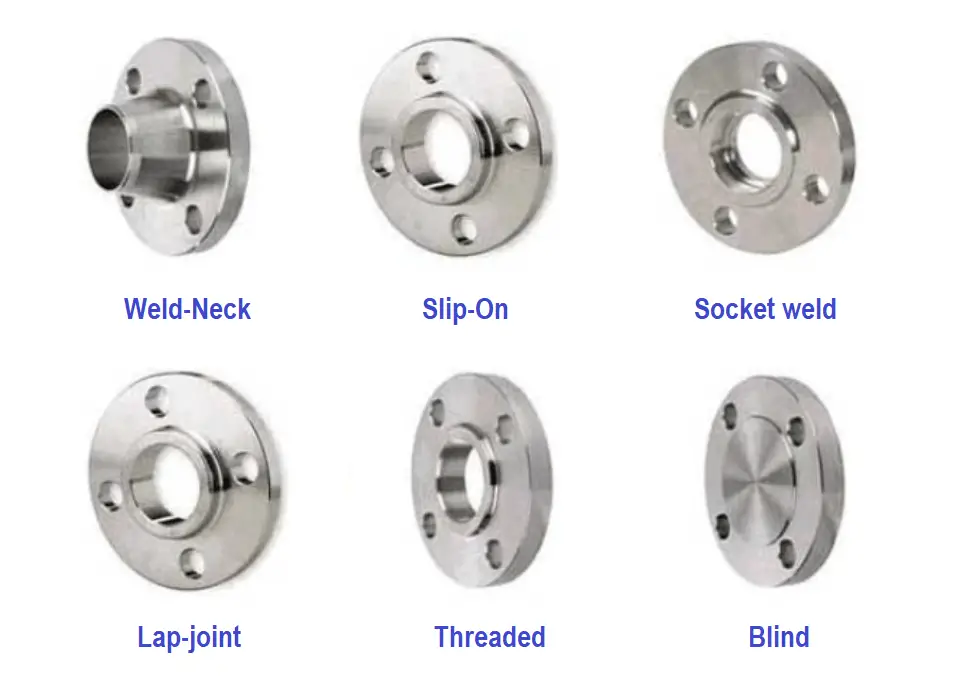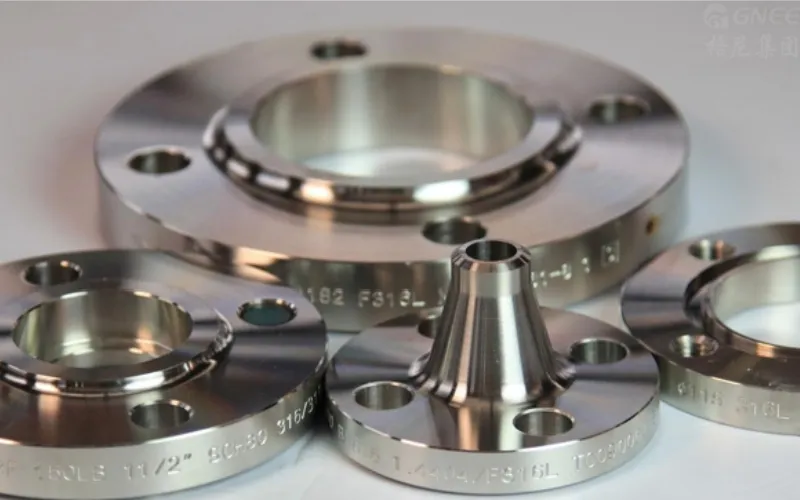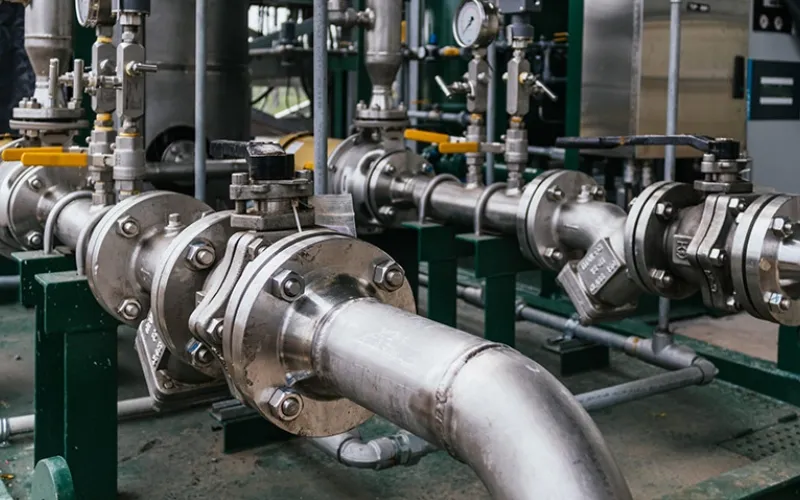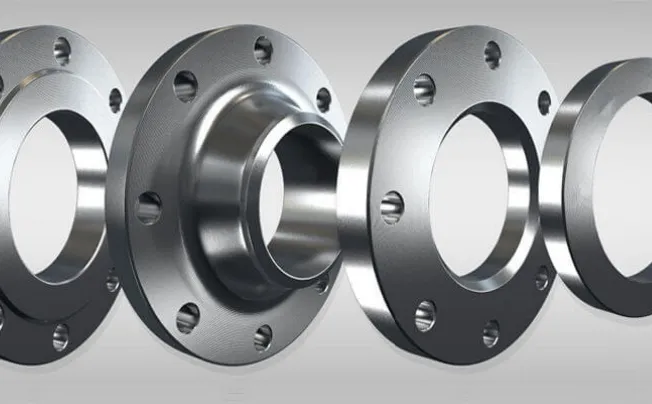What Is Stainless Steel Flange?
Stainless steel flange, often referred to as SS flange, refers to a flange made of stainless steel. It is mainly used as a method of connecting pipes, tubes, valves, pumps, fittings, and other equipment to form a piping system. There are holes in the flange, which can be tightened by bolts to connect the pipes tightly. Then these flanges are sealed with gaskets.
In a word, the stainless steel flange design avoids leakage caused by the inability to align the welding joint during welding, which makes it convenient to use and tear down.
Stainless Steel Flange Dimensions
| Material | stainless steel |
| Standard | DIN, ANSI, JIS, GB |
| Thickness | 5-25mm (support customization) |
| Production Method | Casting, forging |
| Delivery Time | Within 5-10 working days |
Stainless Steel Flange Types
SS flanges can be classified into different types according to different standards. Let’s see below.
1. Manufacturing Process
According to production processes, stainless steel flange can be divided into:
Casting stainless steel flange: it melts metal into liquid molten steel and pours the molten steel into a metal mold to form the shape of the flange. With the characteristics of low manufacturing cost and high efficiency, casting can produce stainless steel flanges with relatively complex shapes.
Forging stainless steel flanges: it is to cut the cylindrical stainless steel billet to a certain size and heat it to a certain temperature to make the billet thermoplastic, then place it on a cold heading so that the forging machine continuously beats the billet to make the inside of the billet tighter. By doing it, forging stainless steel flange has high toughness and good mechanical strength, which are mainly suitable for pipes with higher pressure.
2. Shape
According to the shape, the stainless steel flange can be divided into:
Blind SS Flanges, Slip-on SS Flanges, Socket Weld SS Flanges, Weld Neck SS Flanges, Threaded SS Flanges, Lap Joint SS Flanges, Orifice SS Flanges, Ring-Type Joint SS Flanges

Stainless Steel Flange Advantages
1. Good corrosion resistance. Made of stainless steel, it has all the corrosion-resistant properties of stainless steel, and the design’s integrity can be permanently maintained.
2. Great durability. It can resist corrosion from caustic chemicals, corrosive fluids, oils, and gases, and withstands pressure and high temperatures.
3. High strength. It is much harder than traditional carbon steel flanges.
4. Easy fabrication. It is easy to process and manufacture, which can meet the structural requirements of architects and designers.
5. Easy Maintenance. It provides easy access for cleaning, inspection, or modification and is usually welded or screwed together by bolting together two stainless steel flanges with a gasket between them to provide a seal.
6. Various designs. At Gnee Steel, SS flange types include blind, butt weld, lap joint, slip-on, socket weld, and threaded, which are available in a variety of sizes and shapes. Click here for more: +8619949147586.

Stainless Steel Flange Applications
Due to its good comprehensive performance, stainless steel flanges are widely used in various industries. It is an indispensable part of ss pipe design, pipe fittings, and valves, and is also an essential component in equipment parts (such as manholes, sight glass level gauges, etc.).

Stainless Steel Flange Connection Precautions
1. The flange connection should be kept on the same axis, the center deviation of the bolt hole should not exceed 5% of the hole diameter, and the bolts should be freely pierced. The connecting bolts of the flanges should have the same specifications the installation direction should be the same, and the bolts should be tightened symmetrically and evenly.
2. Angled washers of different thicknesses should not be used to compensate for flange non-parallelism. Do not use double washers. When large-diameter gaskets need to be spliced, they should not be butted with flat ports but should be in the form of a diagonal lap or labyrinth.
3. To facilitate the installation and disassembly of the flange, the fastening bolts and flange surface shall not be less than 200 mm.
4. When tightening the bolts, they should be symmetrical and intersecting to ensure uniform stress on the washers.
5. Bolts and nuts should be coated with molybdenum disulfide, graphite oil, or graphite powder for subsequent removal: stainless steel, alloy steel bolts, and nuts; pipeline design temperatures below 100°C or 0°C; open-air facilities; atmospheric corrosion or corrosive media.
6. Metal washers such as copper, aluminum, and mild steel should be annealed before installation.
7. Directly buried flange connections are not allowed. The flange connections of buried pipelines should have inspection wells. If it must be buried, anti-corrosion measures should be taken.


